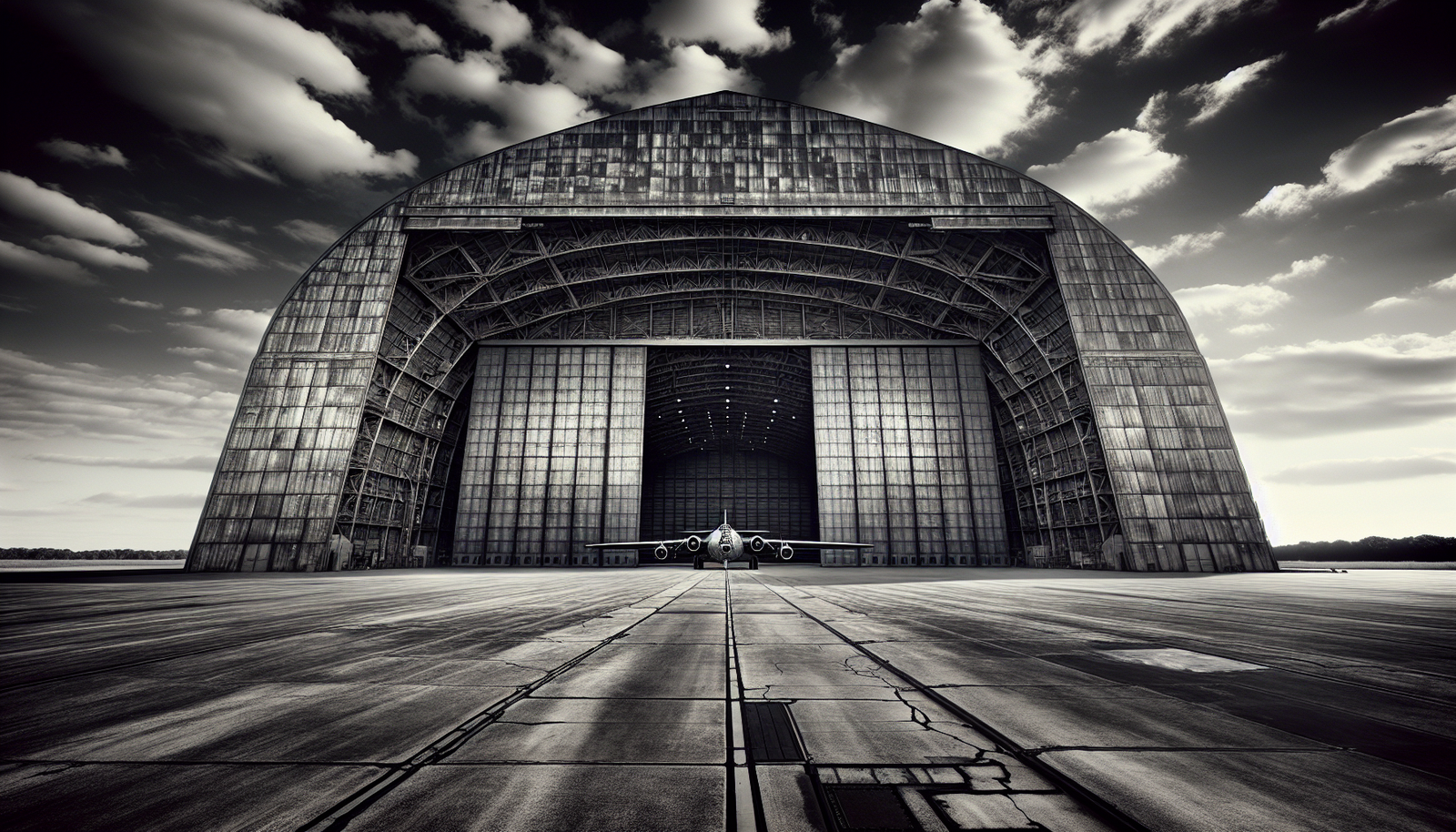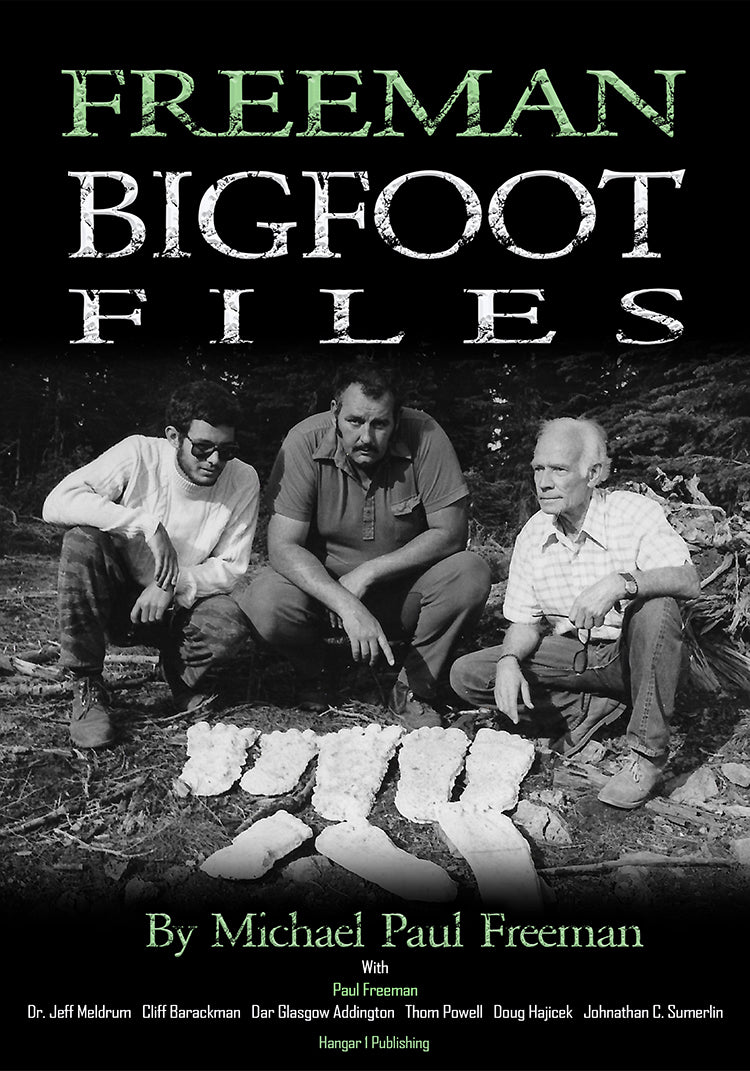Explore Wright-Patterson AFB Hangars

By Malcolm Blackwood, Ufologist
Beyond the gates of one of the Air Force's largest and most significant bases lies a world of aviation history, technological marvels, and persistent folklore – all encapsulated within its diverse array of hangars.
Wright-Patterson Air Force Base spans over 8,000 acres in Ohio, functioning as a "medium-sized city" with more than 16 million square feet of facilities. As the largest single-site employer in Ohio with approximately 30,000 military, civilian, and contractor employees, it generates an economic impact of about $4 billion annually for the Dayton region. But its significance extends far beyond economics.
The hangars at Wright-Patterson are more than just garages for aircraft. They're living archives of aviation achievement, operational hubs for cutting-edge military technology, and in one notorious case, the subject of enduring mystery that has captivated the public imagination for generations.
From historic structures dating back to the dawn of flight to modern high-tech facilities and the legendary "Hangar 18," these buildings tell a multifaceted story of American air power, technological innovation, and our fascination with the unknown.
The Cradle of Aviation: Huffman Prairie and Early Hangars
The story of Wright-Patterson's hangars begins where practical aviation itself began – at Huffman Prairie Flying Field. This unassuming patch of land, now part of the base, was where Orville and Wilbur Wright perfected their flying machine after their initial success at Kitty Hawk. From 1904 to 1905, they transformed the Wright Flyer into the first truly practical airplane capable of fully-controlled flight.
The brothers described Huffman Prairie as "filled with grassy hummocks some six inches high so that it resembles a prairie-dog town." It was far from ideal terrain, and they faced additional challenges from grazing livestock and barbwire fencing. Yet this humble setting became the birthplace of modern aviation.
From 1910 to 1916, the Wright brothers operated a flying school at Huffman Prairie. Their modest hangar, approximately 60 by 100 feet, housed up to three airplanes. Among their 119 students were Henry "Hap" Arnold, who would later command the Army Air Forces in World War II, and H. Roy Brown, the Canadian ace credited with shooting down the Red Baron.
Today, just off the end of Runway 23, a marker, sign, and replica of the Wright Brothers' 1905 hangar and catapult launcher commemorate this hallowed ground of aviation. The contrast between these early structures and today's massive, technologically advanced hangars couldn't be more striking – a physical reminder of how far aviation has come in just over a century.
Guardians of Legacy: The National Museum of the United States Air Force Hangars
If Huffman Prairie represents aviation's roots, the National Museum of the United States Air Force embodies its spectacular growth. As the oldest and largest military aviation museum in the world, it's the crown jewel of Wright-Patterson's public-facing facilities.
The museum's scale is staggering – four enormous hangars spanning 19 acres of indoor exhibit space, housing more than 360 aircraft and missiles. Walking through the main galleries alone covers more than a mile, and that's without stopping to examine any of the incredible exhibits.
The museum's hangars are organized chronologically and thematically, creating a coherent narrative of military aviation history:
Museum Hangars Overview
Hangar 1 houses the Early Years Gallery, showcasing immaculate replicas and authentic century-old airframes from WWI and the interwar period. The adjacent World War II Gallery displays an unparalleled collection of aircraft from both European and Pacific theaters. The hangar also contains the Kettering Gallery (featuring the Berlin Wall and Bob Hope exhibits), an art gallery, and a Holocaust exhibit.
Hangar 2 splits its massive space between the Korean War Gallery and the Southeast Asia War Gallery, telling the story of American air power in these often-overlooked conflicts.
Hangar 3 is dedicated entirely to the Cold War, when technological advancement in aviation reached breakneck speeds. Its north end features exhibits on Desert Storm operations, including an RAF Tornado GR1 with its politically correct nose art.
Hangar 4, the newest addition, is an engineering marvel in its own right. Completed as a LEED Gold certified facility, this 169,000 square foot structure features 14 structural bays and massive hangar doors providing clear openings 170 feet wide by 42 feet high. It houses several themed galleries:
- The Space Gallery showcases NASA's first Crew Compartment Trainer (CCT-1) used to train shuttle astronauts.
- The Research & Development Gallery features experimental aircraft, including the massive XB-70 Valkyrie.
- The Global Reach Gallery highlights airlift capabilities with aircraft like the C-141 "Hanoi Taxi" that returned POWs from Vietnam.
- The Presidential Gallery allows visitors to walk through aircraft used by former commanders-in-chief.
Beyond these indoor spaces, the Air Park displays additional aircraft outdoors, along with the 8th Air Force control tower and original Nissen huts.
What makes these hangars remarkable isn't just the aircraft they contain, but how they transform industrial spaces into immersive educational environments. The Air Force Museum Foundation enhances this experience through technology like a free mobile app, movies in the giant-screen theatre, flight simulators, and shopping opportunities – all supporting the museum's mission while providing visitors with unforgettable experiences.
The Engine Room of History: Restoration Hangars
While the main museum hangars dazzle with their polished displays, another set of hangars at Wright-Patterson operates largely outside the public eye, performing the critical but unglamorous work of preservation and restoration.
These restoration hangars have been described as "unassuming, somewhat neglected appearing, but sizeable" – yet what they contain is anything but inferior. Stepping inside feels like entering the final scene from Raiders of the Lost Ark. Cobwebs cling to hangar doors, tired tires lie flat against concrete floors, bombed-out cockpits gape open, and wooden crates marked with cryptic labels hint at iconic parts within.
Here, museum restoration specialists like Casey Simmons perform the painstaking work of bringing history back to life. Projects can take years or even decades – the famous B-17 Memphis Belle spent 13 years being restored in these hangars before making its public debut. Currently, teams are meticulously reconstructing aircraft like a 1917 Curtiss JN-4D, carefully researching and recreating every detail.
"Preserving these aircraft and putting them on display for the public to view is an important way to connect the stories of the women and men who have served," says Simmons. "It is such an honor to be one of the individuals that the Air Force has chosen to entrust the preservation of their history for future generations to study. We are preserving history."
Weathering the Storms
Restoration Hangar 4, a historic World War II-era building, recently made headlines when it was damaged by an EF1 tornado with winds up to 100 mph. The storm ripped sheet metal off the structure, blew out windows, and bent massive doors. Inside sat several significant artifacts, including a B-17 nicknamed "The Swoose" – the only surviving B-17D Flying Fortress, which flew on the first U.S. combat mission in the Philippines within hours of the Pearl Harbor attack.
Remarkably, despite the hangar's damage, The Swoose emerged with only minor "bumps and scratches." A Bleriot XI, a wood-framed French aircraft undergoing restoration, suffered some damage from debris poking through its fabric covering, but was repairable. Outside the hangar, three aircraft awaiting disposal – an F-104 Starfighter, a T-33 Shooting Star jet trainer, and an A-26 Intruder bomber – were "tossed around quite a bit" by the winds.
These hangars once played an even more crucial historical role. During World War II, they were used for aircraft modification and flight research – making them witnesses to one of the most pivotal technological developments in military history.
Aviation enthusiasts can glimpse this fascinating work on monthly tours of the restoration area, offered on the second Friday of each month (and every Friday during summer). These tours provide a rare look at history in mid-resurrection, showing the extraordinary skill and patience required to maintain our aviation heritage.
Adapting for the Future: Hangar Conversions and Modern Functions
The versatility of Wright-Patterson's hangars extends beyond aviation and museums. Some of these historic structures have found new life through innovative adaptive reuse projects that balance preservation with modern military needs.
Hangar 6, a historic 1942 structure, recently underwent an award-winning $34.7 million renovation, transforming it into secure office space for a 300-person mission. The project presented unique challenges – designers needed to maintain the hangar's historical integrity (as part of the Wright Field Historic District) while meeting stringent modern requirements for security, sustainability, and anti-terrorism measures.
Their ingenious solution was a "building within a building" approach. This design technique provided an additional layer of security while preserving the hangar's architectural character. The exterior renovation included a full restoration of the original 1943 hangar door, maintaining compatibility with the historic district. Inside, clear glazing along a first-floor break area allows building occupants to experience daylight and outside views while working in a secure environment.
Technical Innovation
The technical aspects of this renovation were extraordinary. Engineers had to address progressive collapse mitigation, incorporate stringent security standards (including Intelligence Community Directive 705 for Sensitive Compartmented Information Facilities), and ensure energy efficiency. The project exceeded ASHRAE 90.1-2013 standards by more than 30%, earning LEED Gold certification.
This harmonious blend of historical preservation and cutting-edge functionality earned the Hangar 6 renovation the top honor from the 2022 Air Force Design Awards and an Engineering-News Record Midwest "Best Projects Award" in the renovation/restoration category.
Beyond these reimagined spaces, Wright-Patterson maintains numerous operational hangars supporting active flying units like the 445th Airlift Wing, whose nine C-17 Globemaster III aircraft require regular maintenance and shelter from Ohio's sometimes severe weather. These working hangars form the backbone of the base's day-to-day mission, enabling the Air Force to maintain readiness and respond to global challenges.
The Intrigue Lingers: The Myth and Reality of "Hangar 18"
No discussion of Wright-Patterson's hangars would be complete without addressing the persistent legend of "Hangar 18" – a name that has become synonymous with UFO conspiracy theories and government secrecy.
According to folklore that gained popularity in the 1970s, "Hangar 18" at Wright-Patterson is the secret repository for crashed alien spacecraft and even extraterrestrial bodies recovered from incidents like the alleged Aztec, New Mexico UFO crash. The most famous claims came from Robert Spencer Carr, who in 1974 publicly stated that alien bodies from the Aztec crash were being kept at "Hangar 18." Some stories even suggest that wreckage from the Roswell incident was transported to Wright-Patterson.
Separating Fact from Fiction
The Air Force has consistently denied the existence of a "Hangar 18" at the base. But what's the truth behind the myth?
The reality appears more mundane but still fascinating. There is no "Hangar 18" at Wright-Patterson, but there is a "Building 18." According to one account, this structure served as a cryo-lab in the 1950s, where research was conducted on liquid oxygen and hydrogen as rocket and missile fuel. After a fire gutted the building, the cryo-lab relocated, and the repaired Building 18 housed classified Air Force research projects.
During the Cold War, Wright-Patterson was indeed a center for highly classified work, including the technical evaluation of captured Soviet MiG and Sukhoi fighter jets. This legitimate secrecy, combined with the building's designation, likely planted the seeds for the "Hangar 18" legend.
The story gained further traction through unverified accounts from individuals claiming insider knowledge. June Crane, a former clerk typist at Wright-Patterson, claimed she handled a piece of unusual metal that returned to its original shape after being bent. She also spoke of a government crash retrieval program called "Project Moondust" that shipped objects of unknown origin to the base. Other accounts describe alleged alien bodies with large heads, long skinny appendages, and eyes disproportionately large for their bodies.
Even high-profile figures became entangled in the mythology. Senator Barry Goldwater reportedly requested access to a restricted area at Wright-Patterson and was denied, though he later stated he'd never heard rumors of alien bodies.
Cultural Impact
The secrecy surrounding certain activities at Wright-Patterson provided fertile ground for these theories to flourish. The base was genuinely involved in analyzing foreign technology and developing advanced aircraft, including experimental disc-shaped craft like Project Silver Bug in 1955, which featured vertical takeoff capabilities.
The "Hangar 18" myth has permeated popular culture, inspiring a 1980 film, a Megadeth song, and references in TV shows like Star Trek: Deep Space Nine and The Simpsons. This cultural footprint ensures the legend lives on, despite the lack of concrete evidence.
What's certain is that the real history of Wright-Patterson – its role in aviation development, technological innovation, and national security – is just as compelling as the folklore, if not more so.
Innovation and Resilience: Modern Hangars and Future Challenges
While Wright-Patterson's historic hangars connect us to aviation's past, new facilities in the region point toward its future. The aerospace landscape around Dayton continues to evolve with cutting-edge hangar development closely linked to Wright-Patterson's mission.
Sierra Nevada Corporation recently celebrated the opening of its second large aircraft maintenance, repair, and overhaul (MRO) facility near Dayton International Airport. These massive 300' x 300' x 90' tall hangars can accommodate the largest aircraft in the U.S. military inventory. They're the first large MRO facilities built in the Dayton region since World War II, reestablishing the area as a hub of aviation technology.
What sets these modern hangars apart is their incorporation of advanced technologies including artificial intelligence, machine learning, robotics, and sophisticated testing and scanning tools. These innovations enhance efficiency, productivity, quality, and safety. With hangars 3 and 4 already under construction, SNC is making a substantial long-term investment in the region's aerospace capabilities.
The Digital Frontier
Meanwhile, at Wright-Patterson itself, the Air Force Research Laboratory is developing a concept called the "Digital Hangar" – not a physical building but a virtual repository containing digital surrogates of aerospace systems. This initiative, part of the Department of Defense's Digital Engineering strategy, will house high-value design information for digital representations of Air Force aerospace systems, informing decision-making across various organizations.
The evolution of "hangars" now extends beyond physical structures to include digital spaces for data management and software development. In a fascinating twist, the Air Force recently designated "Hangar 18" – yes, that name – as its newest software factory at Wright-Patterson. Unlike the mythical UFO repository, this very real Hangar 18 focuses on providing software and data capabilities to the Digital Engineering and Acquisition community, accelerating aircraft repair through improved data exchange between previously siloed systems.
Climate Resilience
These advancements come with new challenges. The tornado damage to Restoration Hangar 4 highlights the growing concern about climate resilience in military infrastructure. As extreme weather events become more frequent, the Air Force is increasingly focused on designing facilities that can withstand these threats. The service's 2023 Climate Action Plan notes, "We cannot launch or recover aircraft on a flooded runway, nor can we operate from installations devastated by hurricanes and wildfires."
This perspective recognizes that hangars aren't just buildings – they're critical components of national security. When severe weather damages these structures, it can have real-world consequences for aircraft readiness and mission capabilities.
Despite these challenges, investment in hangar infrastructure continues. The construction of new facilities, the renovation of historic structures, and the development of digital capabilities all point to a future where hangars – both physical and virtual – remain central to the Air Force's mission.
The Enduring Symbolism of Hangars
From the humble wooden structure that housed the Wright brothers' first practical airplane to massive modern facilities incorporating AI and robotics, the hangars at Wright-Patterson Air Force Base embody America's aviation journey.
These structures have witnessed history unfold – from the early pioneers taking flight at Huffman Prairie to B-29s being modified for the atomic mission that would end World War II. They've sheltered experimental aircraft pushing the boundaries of speed and altitude during the Cold War and housed diplomatic aircraft carrying presidents on missions of global importance.
Today, they continue serving diverse roles: preserving our aviation heritage, supporting operational readiness, enabling research and development, and inspiring future generations through education and public engagement.
What makes Wright-Patterson's hangars particularly fascinating is the blend of documented reality and captivating folklore that surrounds them. The verified history of these structures – their architectural significance, the aircraft they've housed, the missions they've supported – stands alongside persistent legends that capture our imagination and reflect our enduring fascination with the unknown.
Whether housing vintage warbirds, cutting-edge technology, or (as some still believe) evidence of extraterrestrial visitors, the hangars at Wright-Patterson remain powerful symbols of America's aerospace excellence – and the human drive to push boundaries, preserve history, and explore the mysteries that lie beyond our atmosphere.
From Bigfoot to UFOs: Hangar 1 Publishing Has You Covered!
Explore Untold Stories: Venture into the world of UFOs, cryptids, Bigfoot, and beyond. Every story is a journey into the extraordinary.
Immersive Book Technology: Experience real videos, sights, and sounds within our books. Its not just reading; its an adventure.


























